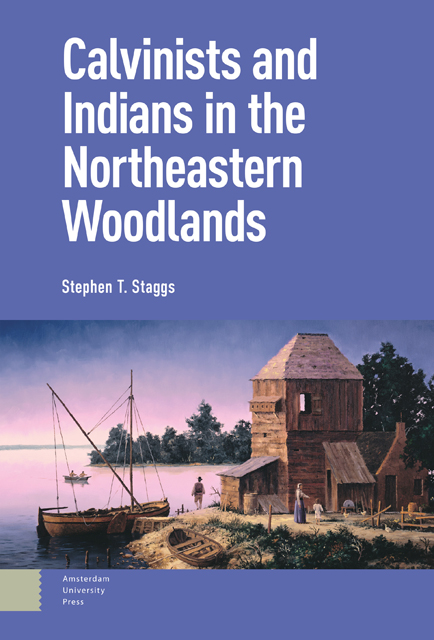Book contents
- Frontmatter
- Contents
- Acknowledgements
- Abbreviations
- List of Figures
- Notes on Usage
- Introduction
- 1 “Gentiles by Nature,” 1566–1626
- 2 “So That the Fullness of the Gentiles Might Gradually Come In,” 1627–1642
- 3 “A Church and Community among the Christians and the Blind Gentiles,” 1642–1652
- 4 “We, with God’s Help, Hope to Bring the Barbarous Tribes to Devotion,” 1652–1660
- 5 “Who Gave Jacob for a Spoil and Israel to the Robbers?” 1660–1664
- 6 “A Gentile Woman, Karanondo, … Now Called Lidia,” 1664–1750
- Conclusion
- Appendix A Dutch References to Indians: 1609–1664
- Appendix B Indian Baptisms, Professions of Faith, and Marriages in the Dutch Reformed Churches of New York: 1690–1750
- List of Archival Sources
- Bibliography
- Index
Appendix A - Dutch References to Indians: 1609–1664
Published online by Cambridge University Press: 17 October 2023
- Frontmatter
- Contents
- Acknowledgements
- Abbreviations
- List of Figures
- Notes on Usage
- Introduction
- 1 “Gentiles by Nature,” 1566–1626
- 2 “So That the Fullness of the Gentiles Might Gradually Come In,” 1627–1642
- 3 “A Church and Community among the Christians and the Blind Gentiles,” 1642–1652
- 4 “We, with God’s Help, Hope to Bring the Barbarous Tribes to Devotion,” 1652–1660
- 5 “Who Gave Jacob for a Spoil and Israel to the Robbers?” 1660–1664
- 6 “A Gentile Woman, Karanondo, … Now Called Lidia,” 1664–1750
- Conclusion
- Appendix A Dutch References to Indians: 1609–1664
- Appendix B Indian Baptisms, Professions of Faith, and Marriages in the Dutch Reformed Churches of New York: 1690–1750
- List of Archival Sources
- Bibliography
- Index
Summary
In order to assess how Nieuw Nederlanders (New Netherlanders) perceived Indians, it is essential to determine what terms the Dutch used to refer to them. The purpose of tables A.1–A.4 is to provide a sense of how their views of Indians persisted and evolved over time. The data gathered here is summarized in graphs 4.1–4, which can be found on pages 13, 71, 116, and 129. The data was gleaned from a comprehensive cross-section of sources written by Dutch individuals on both sides of the Atlantic who either had first-hand experiences with Indians living in the Northeastern Woodlands or had read first-hand accounts written by those with first-hand experiences. The bulk of the data comes from the original Registers of the Provincial Secretary, Council Minutes, Correspondence, and Patents housed in the New York State Archives. Finally, to determine whether social status and/or place had any influence on how individuals characterized Indians, the occupation and location of each individual is, when possible, identified.
- Type
- Chapter
- Information
- Calvinists and Indians in the Northeastern Woodlands , pp. 235 - 270Publisher: Amsterdam University PressPrint publication year: 2023

